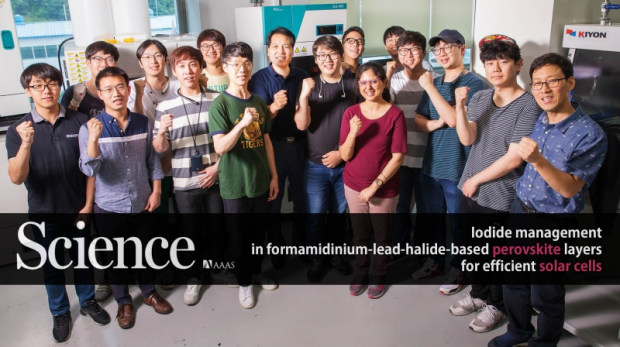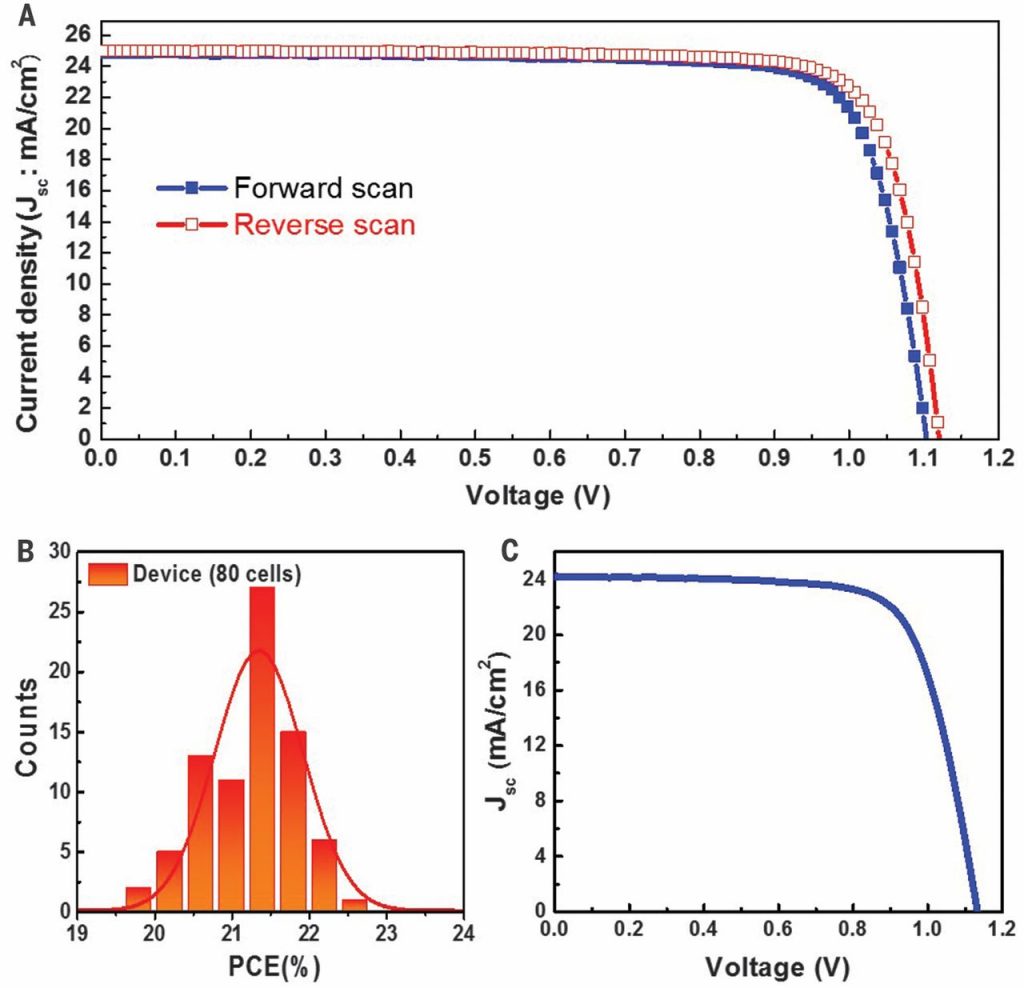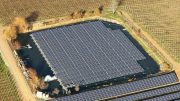
Professor Sang-Il Seok of Energy and Chemical Engineering hits new world efficiency record (22.1%) with PSCs.
Their findings appeared in the prestigious journal, Science consecutively.
A recent study, affiliated with UNIST finds key to produce a new cost-efficient way to produce inorganic-organic hybrid perovskite solar cells (PSCs) which sets a new world-record efficiency performance of 22.1 % in small cells and 19.7 percent in 1-square-centimeter cells.
This breakthrough comes from a research, conducted by Distinguished Professor Sang-Il Seok of Energy and Chemical Engineering at UNIST in collaboration with Professor Jun Hong Noh of Korea Research Institute of Chemical Technology and Professor Eun Kyu Kim of Hanyang University who both partook as co-authors of the study.
A key feature of this technology is its ability to fix the dominating defect in perovskite-halides, which is known to decrease the photoelectric efficiency. Their results, published online in the June 30th issue of the prestigious journal Science, demonstrates that careful control of the growth conditions of perovskite layers with management of deficient halide anions is essential for realizing high-efficiency thin-film PSCs based on lead-halide-perovskite absorbers.
“This study can improve the current record efficiency of perovskite solar cells from 20.1% to 22.1%,” says Professor Seok. “This will accelerate the commercialization of the low-cost, high-performance perovskite solar cells.”
A perovskite is an unique crystal structure, consisting of formamidinium with multiple cations and mixed halide anions. A perovskite solar cell (PSC) is a type of solar cell, which includes the perovskite structured compound, most commonly a hybrid organic-inorganic lead or tin halide-based material, as the light-harvesting active layer.
An organic-inorganic hybrid PSC is a type of solar cell, which includes the perovskite structured compound, as the light-harvesting active layer. Such devices have inspired much research interest owing to their applications in high-efficiency solar cells and light emission. Indeed, these solar cells not only show relatively high photovoltaic energy conversion efficiencies (above 22%), but can be also easily fabricated using cheap inorganic-organic perovskite compounds.
The formation of a dense and uniform thin layer on the substrates is crucial for the fabrication of high-performance PSCs. The concentration of defect states, which reduce a cell’s performance by decreasing the open-circuit voltage and short-circuit current density, needs to be as low as possible.

Current density–voltage (J-V) curves and photovoltaic parameters of the best-performing small and large PSCs and device reproducibility.
The research team reports that careful control of the growth conditions of perovskite layers with management of deficient halide anions is essential for realizing high-efficiency thin-film PSCs based on lead-halide-perovskite absorbers.
In their study, the research team demonstrated the introduction of additional iodide ions into the organic cation solution, which are used to form the perovskite layers through an intramolecular exchanging process, decreases the concentration of deep-level defects. The result showed that the defect-engineered thin perovskite layers enable the fabrication of PSCs with a certified power conversion efficiency of 22.1% in small cells and 19.7% in 1-square-centimeter cells.
The energy conversion efficiency of those PSCs with reduced defects is 22.1% and has been officially certified by the National Renewable Energy Laboratory (NREL).
“The key to manufacturing high-performance solar cells to reduce defects in materials that generate energy loss when converting sunlight to electricity,” says Professor Seok. “Our study presents a new method that suppresses the formation of deep-level defects, thereby setting a new record efficiency for PSCs.”
The study has been supported by the Global Frontier R&D Program for Multiscale Energy System and the Climate Change Program.
Jul 01, 2017
Originally published by Unist





